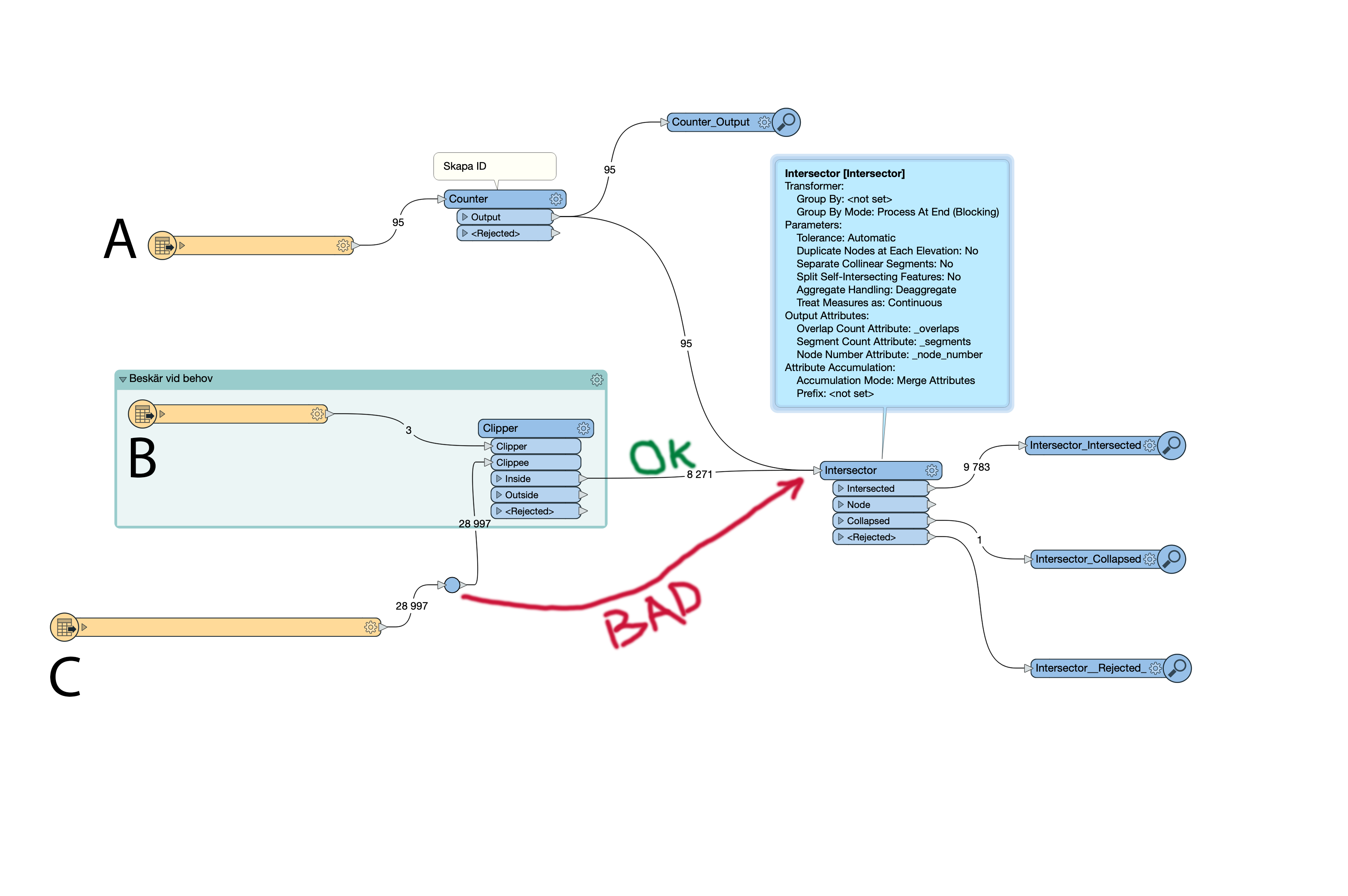I have run into the strangest problem using the Intersector.
Source A is a dataset of overlaying polylines containing attributes I want transferred to the polylines in source C. B is a polygon I use to reduce the amount of data whilst building the workspace, B is to be deleted in the final version.
As long as the data passes the clipper the output is as expected, ie features are cut and attributes are merged. But when I bypass the clipper (and turn it off) the data gets cut but attributes are not merged.
What on earth is going on here? I can't make sense of this.

Best answer by aron
View original



